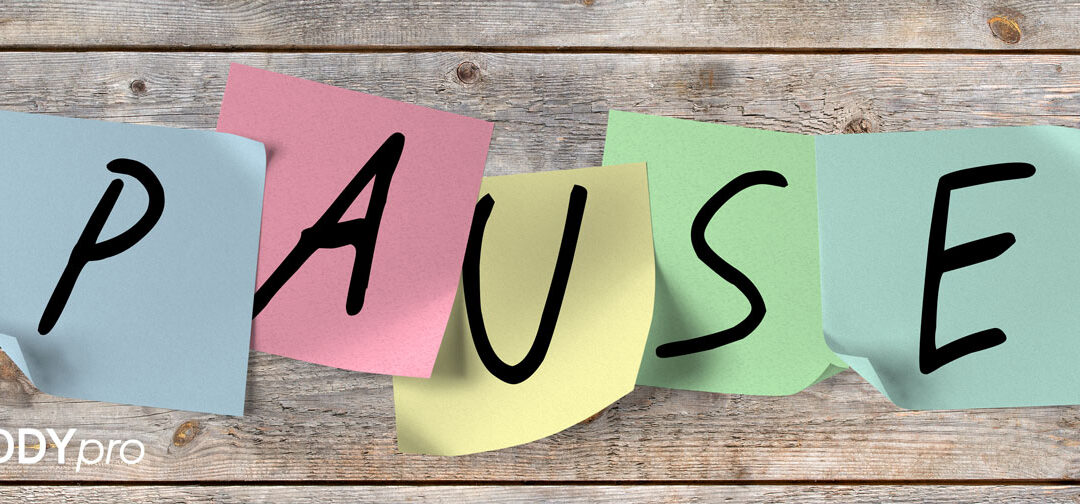If you haven’t read part one of this series, you may want to check that out first.
Why Pause?
Have you ever listened to a presenter who talked at a breakneck speed without pausing for breath Exhausting, isn’t it?
This seems to be a popular style of presenting in our fast-paced world (radio announcers do it all the time), but audiences frequently leave such a talk with their heads spinning and the information whirling around in a meaningless blur.
So, give your audience members a break from time to time—literally.
Adding strategically placed pauses lets them relax, and a relaxed listener can focus better, and learn more effectively. The properly timed pause highlights what you think is most important in your talk. It helps listeners absorb and remember what you’ve said long after you’re gone.
Pauses give your listeners the opportunity to digest and assimilate what you said and perhaps even come up with a great question or comment.
5 Times to Pause
- After an important point. You might want to repeat your point, and then pause again
- Between items in a list.
- When you want to focus attention. The very fact that you have stopped speaking will make audiences wonder why and focus on your next words.
- When you want to connect with your audience members and increase eye contact.
- In sentences that contain, “but,” “yet” and “however.” Here’s an example: “Last year, we had to do a painful downsizing (pause), but this year, profits are way up and bonuses will match!”
Practice Pausing
Of course, I know you’ve already practiced that important business presentation or keynote speech in the mirror—perhaps even recorded it to listen to your own voice, noting what you could do better.
Make sure to also practice your pauses and notice how they change the feel or impact of your presentation. Practice how to stand comfortably, and what to do with your hands when you pause. Don’t fidget.
If you find it difficult to pause for more than a split second, you can even count silently in your head, one one-thousand, two one-thousand, etc., to make sure you’re pausing for the most effective amount of time.
As with all things presentation-related, the more you practice, the more natural strategic pausing will become.

